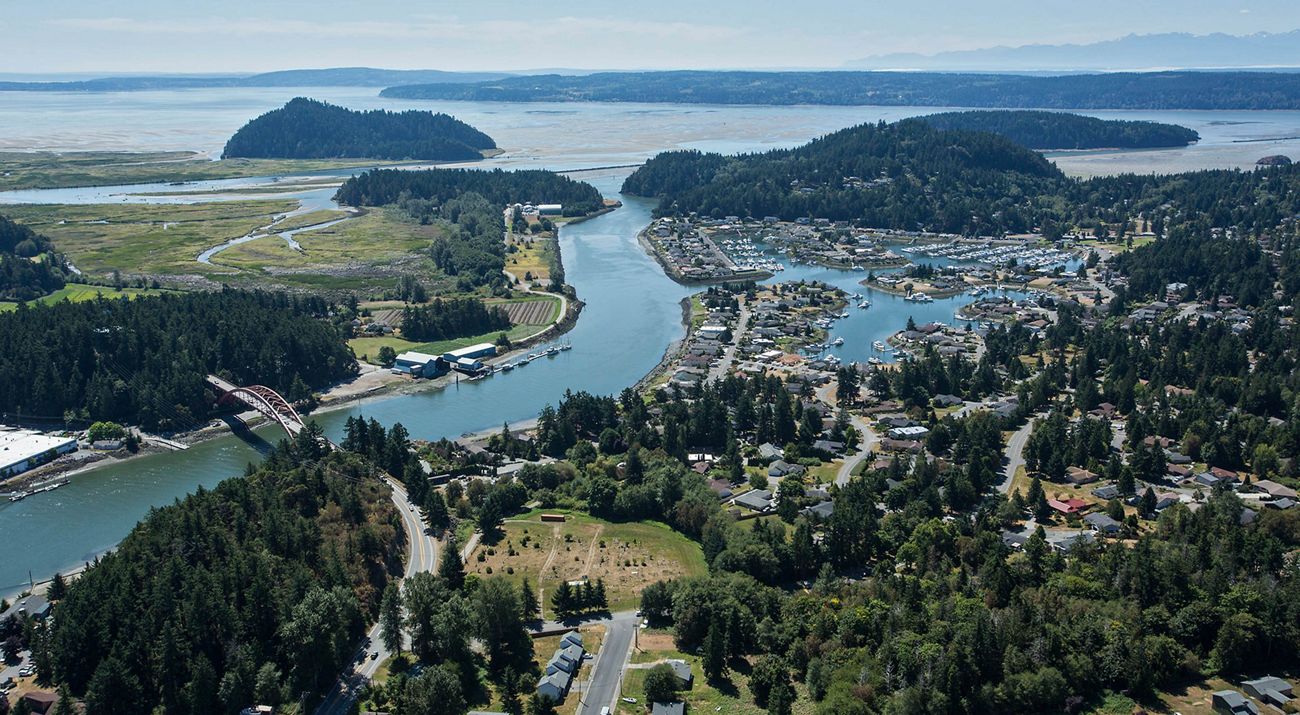Coastal Resilience in Puget Sound
Making coastlines tougher in the face of climate change.
Puget Sound is the second largest estuary in the country, a factory for salmon and shellfish, home to 4.5 million people, and the economic engine of one of the nation’s strongest regional economies. While the Sound is greatly loved, the people living here are increasingly vulnerable to the Sound itself – from rising sea levels, extreme coastal storms and more frequent river flooding.
TNC is working to make Puget Sound coastlines more resilient in the face of climate change.
Quote
Coastlines change over time, and as climate change brings higher seas and more intense storms, communities need to be able to adapt. Making decisions and investments to adapt wisely leads to coastal resilience.
The Problem
Climate change is here, right now, and we're already feeling the impacts. In western Washington, we’ve been seeing bigger floods and storms in the last couple of decades. By 2100, sea level will rise 24 inches in Puget Sound. Big floods and storms—the ones we currently call “100 year events”—could be the norm. Coupled with growing populations on our coasts and floodplains, communities face greater damage, expenses and loss.
So, we’re helping Puget Sound’s coastal communities become more resilient in the face of climate change.
What is Coastal Resilience?
It’s all about resiliency, the ability to bounce back more quickly from disasters and deal with less costly impacts. Coastlines change over time, and as climate change brings higher seas and more intense storms, communities need to be able to adapt. Making decisions and investments to adapt wisely leads to coastal resilience.
What TNC is Doing
TNC scientists are researching cost-effective ways to protect communities. One-third of Puget Sound shoreline is armored to protect communities from flood and storm damage. That “gray” infrastructure—levees, dikes, bulkheads and armored roads—is important. But natural “green” infrastructure—tidal marshes, wetlands, eelgrass beds— can be a powerful tool in building coastal resilience.
With partners, our Puget Sound Coastal Resilience Project studies six deltas across Puget Sound. We’ve developed a cutting-edge “wave model” to explore the role natural habitat plays in reducing the impact of storms. The models show that “green” infrastructure helps protect us from storms, floods and rising seas. Creating resilient coastal communities will require cost-effective investments in natural infrastructure, like restoring tidal wetlands and preserving natural lands in low-lying coastal zones. Our work at Port Susan Bay Preserve is showing the benefits of investing in natural habitat to help nature and people.
Coastal communities are going to face bigger storms, bigger floods and higher sea levels no matter what. On top of that, coastal populations and development is only increasing. So, these tools help communities to see where and how they are vulnerable and what they can do about it. The bottom line is that communities rely on a mix of both gray and green infrastructure for protection, but we often forget the important role natural habitat plays in keeping us safe. This work sparks a dialogue about how we can all work together to minimize damage and increase resilience across Puget Sound.
